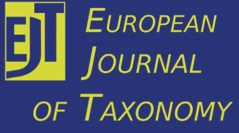

 European Journal of Taxonomy
782 (173) - Pages 173-196
European Journal of Taxonomy
782 (173) - Pages 173-196The European Journal of Taxonomy (EJT) is a decade-old journal dedicated to the taxonomy of living and fossil eukaryotes. Launched in 2011, the EJT published exactly 900 articles (31 778 pages) from 2011 to 2021. The journal has been processed in its entirety by Plazi, liberating the data therein, depositing it into TreatmentBank, Biodiversity Literature Repository and disseminating it to partners, including the Global Biodiversity Information Facility (GBIF) using a combination of a highly automated workflow, quality control tools, and human curation. The dissemination of original research along with the ability to use and reuse data as freely as possible is the key to innovation, opening the corpus of known published biodiversity knowledge, and furthering advances in science. This paper aims to discuss the advantages and limitations of retro-conversion and to showcase the potential analyses of the data published in EJT and made findable, accessible, interoperable and reusable (FAIR) by Plazi. Among others, taxonomic and geographic coverage, geographical distribution of authors, citation of previous works and treatments, timespan between the publication and treatments with their cited works are discussed. Manually counted data were compared with the automated process, the latter being analysed and discussed. Creating FAIR data from a publication results in an average multiplication factor of 166 for additional access through the taxonomic treatments, figures and material citations citing the original publication in TreatmentBank, the Biodiversity Literature Repository and the Global Biodiversity Information Facility. Despite the advances in processing, liberating data remains cumbersome and has its limitations which lead us to conclude that the future of scientific publishing involves semantically enhanced publications.